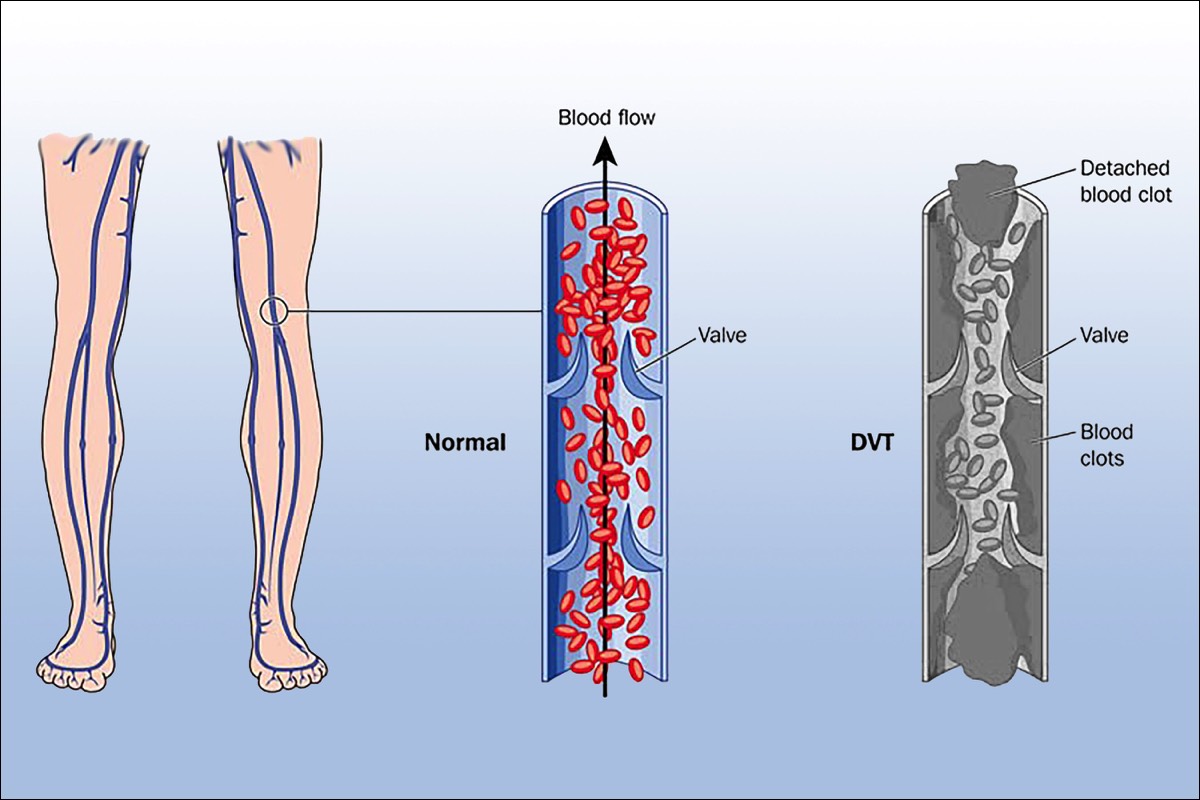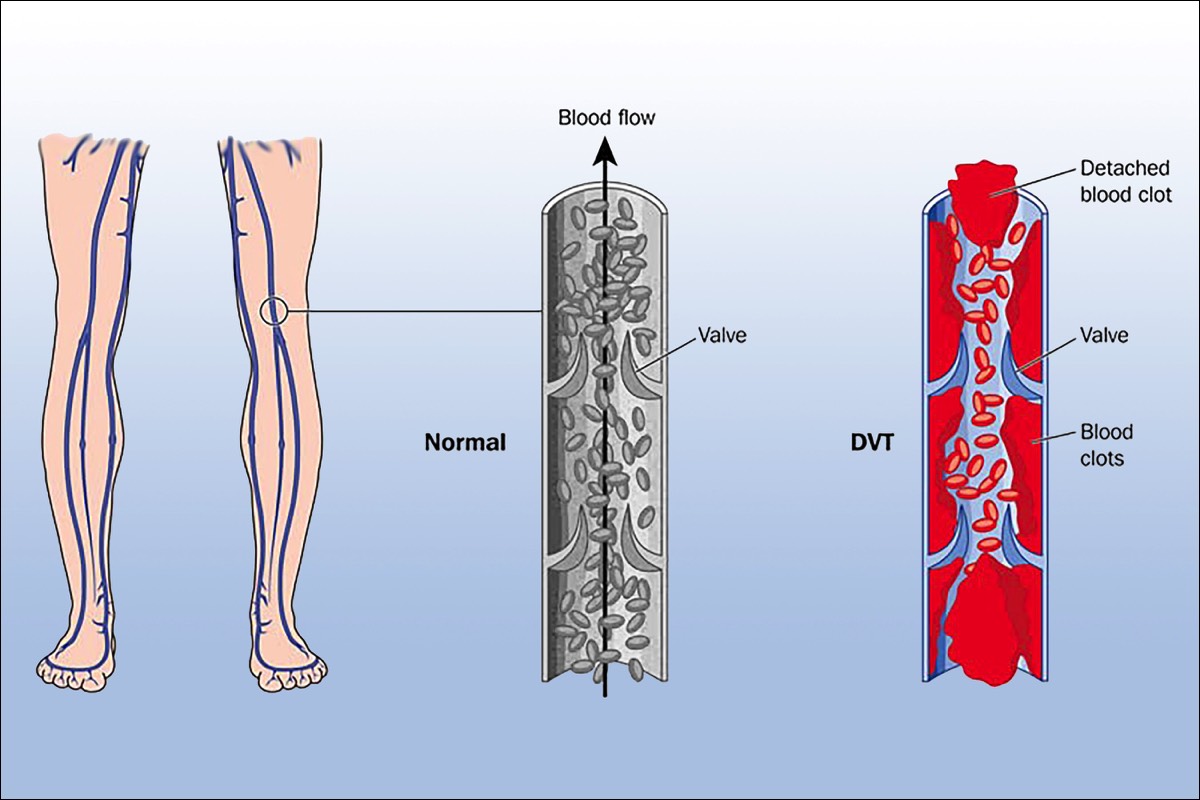-
Deep Vein Thrombosis / DVT
Deep vein thrombosis, or DVT, is a blood clot that forms in a deep vein. The deep veins in the legs help carry blood from the legs back to the heart. When leg muscles contract and relax, blood is squeezed up the veins toward the heart. One-way valves located along the walls of the veins help keep blood moving upward in the right direction. They open to allow blood through, and then close so that blood doesn’t leak backward. When blood moves too slowly or not at all, it can pool in the veins. This makes a clot more likely to form.
This is a serious condition, that if not treated, could cause life-threatening consequences, such as a pulmonary embolism. If a piece of the clot breaks off, it could travel to your lungs, and make breathing difficult, or even cause death.
Valve Open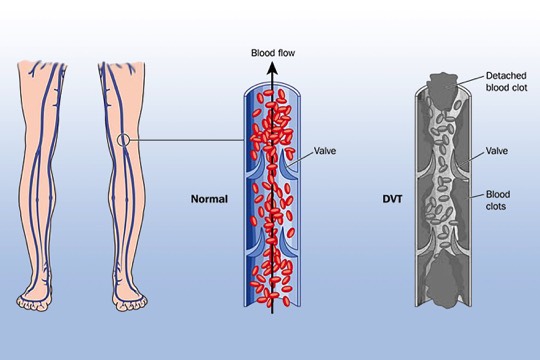 When a muscle contracts, the valve opens. Blood is squeezed up the vein toward the heart.Blood Clot
When a muscle contracts, the valve opens. Blood is squeezed up the vein toward the heart.Blood Clot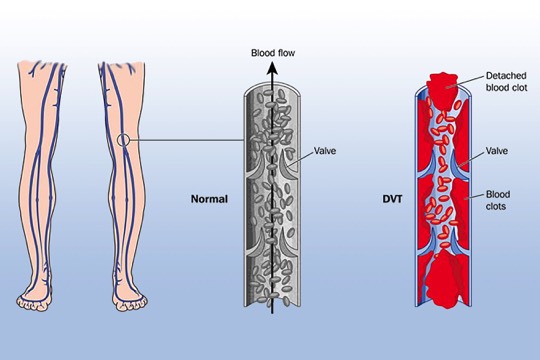 When blood moves slowly in a vein, a clot can form. A part of the clot can break off and travel in the bloodstream.
When blood moves slowly in a vein, a clot can form. A part of the clot can break off and travel in the bloodstream. -
What are the Symptoms?
DVT does not always cause obvious symptoms. If you have symptoms, they usually occur suddenly and in one leg. If you suspect that you have DVT, contact your doctor immediately.
Symptoms include:- Pain, especially deep in the muscle
- Swelling
- Aching or tenderness
- Red or warm skin
-
What are the Risk Factors?
Anyone can get Deep Vein Thrombosis, but the following increase the risk:
- Being inactive for a long period of time, such as when you are bedridden from, or recovering from an illness, after a major surgery, or during a long flight
- Injury to a vein, such a catheter, dialysis catheter, or PICC line
- Family history of blood clots
- Recent surgery
- Cancer
- Medications, especially hormones
Other factors such as age, pregnancy, having another vein problem, or being overweight can also put you at a higher risk of DVT. -
How is the Diagnosis Made?
The doctor will ask about your symptoms and risk factors. Tell your doctor if you or a family member has a history of vein problems. Make sure to inform your doctor of any recent surgical procedures, leg injuries, or any blood clots that you may have had. If you are female, make sure to inform your doctor if you are pregnant, or taking hormones. Your doctor will check your legs for any abnormal veins or swollen or tender areas. A duplex ultrasound test will also be ordered. After the evaluation, your doctor will discuss treatment options with you.
Duplex Ultrasound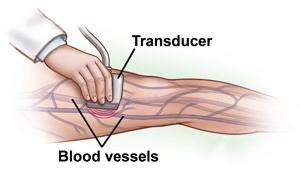
Ultrasonography is a painless, non-invasive test. A small transducer is pressed against the skin, utilizing sound waves to create images. A gel is applied to the skin to help the transducer create accurate images. The test will help the doctor pinpoint the size and location of a blood clot, if you have one.
A Blood Test Known as a D-Dimer
This is a blood test to look for a substance called D-dimer. This test is used to rule out a blood clot.
D-dimer is a protein fragment from the break down of a blood clot. Blood clots generally begin to slowly break down after they are formed, and this process releases D-dimer into the blood. -
Treatment
MedicationsDVT is usually treated with medications. Blood thinners, also known as anti-coagulants, are the most common medicines used for treating DVT. They prevent blood clots from getting larger by decreasing your blood’s ability to clot. Over time, your body works with the blood thinners to decrease the size and consistency of the clot. Blood thinners can be taken as a pill, or as an injection. Blood thinners can increase your chance of bleeding, so careful follow-up with your physician is necessary.
Thrombolytic therapy is sometimes used to quickly dissolve a blood clot, especially if the clot is large and causing severe symptoms. A catheter is inserted into the affected vein and the clot dissolving medication is delivered directly to the clot. This treatment brings with it a higher risk of bleeding than blood thinners.
Inferior Vena Cava FilterAn inferior vena cava (IVC) filter, is a small device used to trap an embolism in the lower body. The filter is delivered by a catheter and placed in the IVC, which is the largest vein in the body. It may also be done before surgery if you are at risk of a pulmonary embolism. The filter does not stop a blood clot from forming, but can prevent a large clot from entering your lungs. An IVC filer is usually indicated if the patient cannot receive blood thinner medications, or failed medical therapy.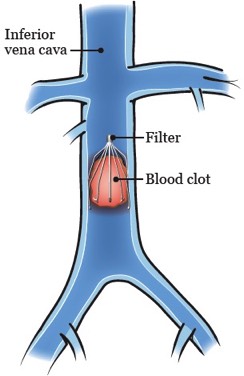
-
Living a Healthier Life
Maintain good overall health to decrease your risk of DVT.
- Stay physically active. This is very important following surgery and during long trips.
- Maintain a normal weight.
- Seek treatment quickly for any problem.
- If you have a blood clot now or have ever had one, it is important to discuss the risks and benefits of staying on blood thinners with your physician.




